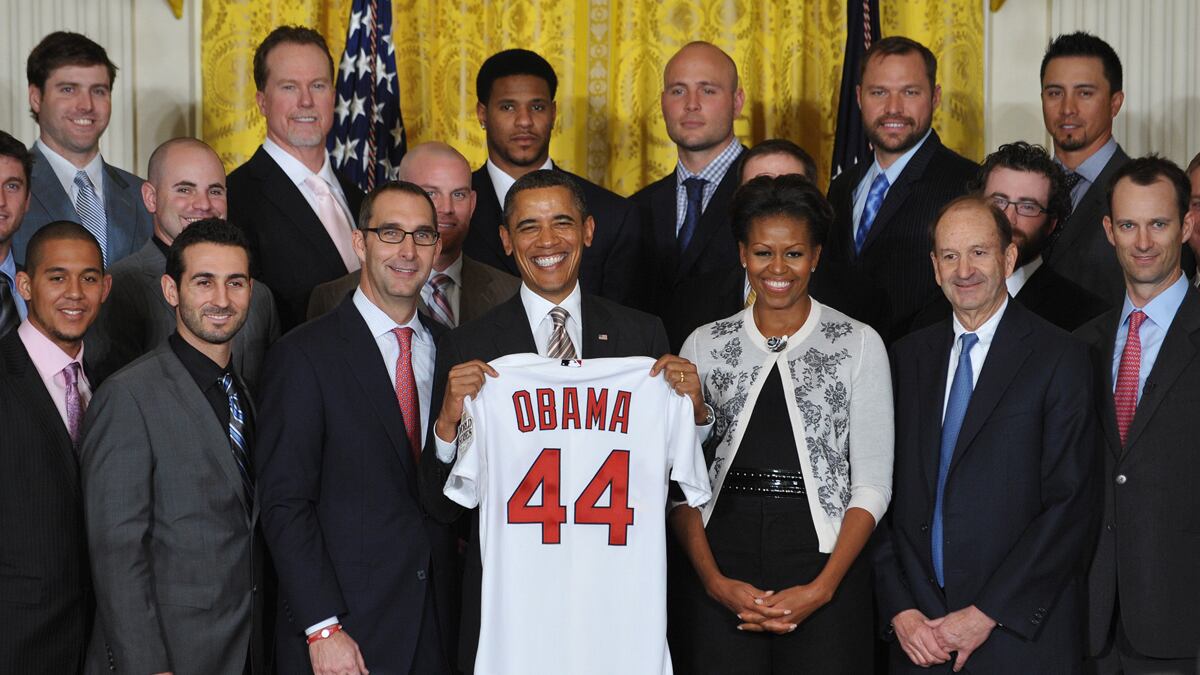The State of the Union address is President Obama’s opportunity to remind America of the past year’s successes and set the tone for the year to come. The Daily Beast took the opportunity to look at the numbers behind Obama’s performance.

Popularity
Americans are split on Obama’s performance over the last year. His average approval rating for 2011 was 44.4 percent, according to Gallup. That’s a big drop from the heady days of 2009 (57.2 percent), but not that big a decline from 2010’s 46.7 percent. In recent history, only Jimmy Carter’s third-year approval rating was worse, with 37.4 percent. But plenty of presidents had similarly low ratings and went on to win reelection—Ronald Reagan’s third-year rate was 44.9 percent, and Bill Clinton’s was 47.5.
Voters may not be satisfied with Obama’s performance, but they apparently don’t hold it against him. According to Pew, 75 percent of Americans say Obama stands up for his beliefs, 60 percent say he cares about people like them, and 61 percent say he’s trustworthy. Fifty-one percent say they have a favorable view of Obama. That’s far more than the 31 percent of people who have a favorable view of Mitt Romney, or the 16 percent who think well of Newt Gingrich.
For a less traditional measure of Obama’s reelection prospects, Intrade, the online prediction market, puts Obama’s odds of reelection at a little better than even, with 55.7 percent.
Jobs
The most important issue for voters evaluating Obama’s performance is, of course, the economy, and within the economy, jobs.
Job growth was steady but slow for 2011, with employers adding 1.64 million workers over the course of the year. Nevertheless, it was the best year since 2006, and 2010 was the second-best year, with employers adding 940,000 jobs.
And there are signs that job growth may be accelerating. In December, the unemployment rate dropped to 8.5 percent, the lowest point in almost three years. At the same time, hours worked rose to 34.4 per week, and earnings rose to $23.24 per hour, further signs that the economy is recovering, however slowly.
Unemployment is still high, and the underemployment rate—which counts part-time workers who want full-time work—is at 15.2 percent. But with a 1 percent drop in unemployment over the last year, Obama is better off than Reagan was at the end of his first term. Reagan cruised to victory over Walter Mondale despite an unemployment rate of 7.4 percent on Election Day, and an 8.8 percent unemployment rate a year before. The question is whether the unemployment rate will continue its steady decline.
Downgrade
Last year the United States’ credit rating was downgraded for the first time, albeit by only one rating agency. But that move had no apparent effect on U.S. Treasuries, whose yields continued climbing to decades-old highs. Long-term Treasuries generated 29.9 percent in 2011, according to Barclays Capital data, whereas the larger benchmark for the bond market had only a 7.8 percent return.
Stocks
If you’re looking to stocks as an indication of Obama’s success, 2011 won’t be much help. For all its volatility, 2011 ended in a wash. The Dow gained 5.5 percent, to finish at 12,217.56. The broader S&P 500 ended the year down 0.003 percent, to 1,257.60. The NASDAQ Composite finished in the red, slipping 1.8 percent, to 2,605.15.
Housing
No segment of the economy was hit harder by the recession than the housing market, and three years later, it’s still abysmal. Last year construction began on only 428,600 single-family homes, the fewest in a half-century of records. For the entire year, builders began work on 606,900 homes, slightly better than for the previous two years, but still far from the normal level.
Part of the reason for the dismal home-construction numbers is the glut of previously owned and foreclosed homes on the market. It’s a faint glimmer of good news, then, that sales of previously owned homes rose last month to the highest level since January 2011.
Deficit
The government’s budget deficit in the 2011 fiscal year was $1.3 trillion, or 8.6 percent of gross domestic product. That’s the same as it was for 2010, though a smaller percentage of GDP. In 2009, the deficit equaled 10 percent of the economy.
Health Care
Jobs and the deficit have replaced the Affordable Care Act as a major talking point, but the National Health Interview Survey found that 2.5 million adults aged 19 to 25 were insured under the program.
Trade
In his last State of the Union address, Obama set the goal of doubling exports by 2014. How’s he doing? The U.S. exported $179 billion in November 2011, the most recent month the Census Bureau has data for. That’s a 12 percent increase over November 2010, and a 30 percent increase over November 2009. However, imports increased as well, and the U.S. trade deficit rose about 10 percent last year.
Iraq
The last U.S. soldiers left Iraq on Dec. 17, fulfilling an Obama campaign promise. However, about 16,000 government officials and security contractors remain behind, and the State Department estimates that about 5,000 security contractors will have to stay in the country through 2012 to protect diplomatic personnel.
Guantánamo
Three years after Obama ordered the prison at Guantánamo Bay closed, 171 detainees remain.
Drones
Obama may have used Navy SEALS to kill Osama bin Laden, but perhaps the most profound shift in his counterterrorism strategy is the massive expansion of drone warfare. In the five years before Obama took office, 44 drone strikes killed about 400 people in Pakistan. In the last three years, 241 drone strikes in Pakistan have killed between 1,354 and 2,254 people—not counting the strikes in Yemen and Somalia.
Strikes tapered off somewhat this year, partly because of high tensions with Pakistan and partly because there aren’t many al Qaeda members left alive. The administration says only two “high-value” targets are left in Pakistan.
Campaign
Of course, this State of the Union address isn’t any old State of the Union address: it’s Obama’s chance to set the tone for his reelection campaign, for an hour and a quarter, to an audience of 43 million. So how’s his campaign doing?
The Obama campaign and its Democratic allies raised $68 million in the last quarter of 2011, bringing the year’s total to $250 million. For comparison, that’s a bit less than the $70.4 million the Bush-Cheney campaign raised during the same period in 2003, and less than the $273 million (adjusted for inflation) it raised in all of 2003.
On the other hand, it’s far more than Mitt Romney’s $24 million for the quarter. But Romney also has his super PAC, which raised $12.2 million in the first half of last year. Obama’s super PAC, Priorities USA Action, and its nonprofit affiliate raised only about $5 million.





